Huseyin Arslan
ISAC with Affine Frequency Division Multiplexing: An FMCW-Based Signal Processing Perspective
Nov 15, 2025Abstract:This paper investigates the sensing potential of affine frequency division multiplexing (AFDM) in high-mobility integrated sensing and communication (ISAC) from the perspective of radar waveforms. We introduce an innovative parameter selection criterion that establishes a precise mathematical equivalence between AFDM subcarriers and Nyquist-sampled frequency-modulated continuous-wave (FMCW). This connection not only provides a clear physical insight into AFDM's sensing mechanism but also enables a direct mapping from the DAFT index to delay-Doppler (DD) parameters of wireless channels. Building on this, we develop a novel input-output model in a DD-parameterized DAFT (DD-DAFT) domain for AFDM, which explicitly reveals the inherent DD coupling effect arising from the chirp-channel interaction. Subsequently, we design two matched-filtering sensing algorithms. The first is performed in the time-frequency domain with low complexity, while the second is operated in the DD-DAFT domain to precisely resolve the DD coupling. Simulations show that our algorithms achieve effective pilot-free sensing and demonstrate a fundamental trade-off between sensing performance, communication overhead, and computational complexity. The proposed AFDM outperforms classical AFDM and other variants in most scenarios.
Waveform-domain NOMA: An Enabler for ISAC in Uplink Transmission
Nov 11, 2025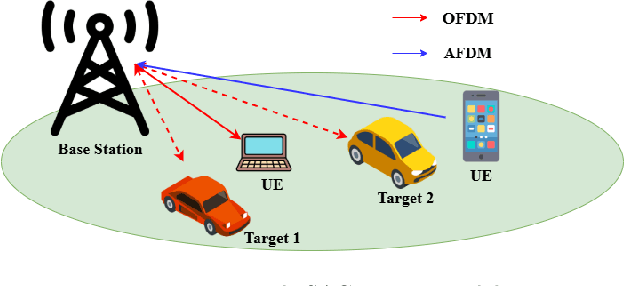
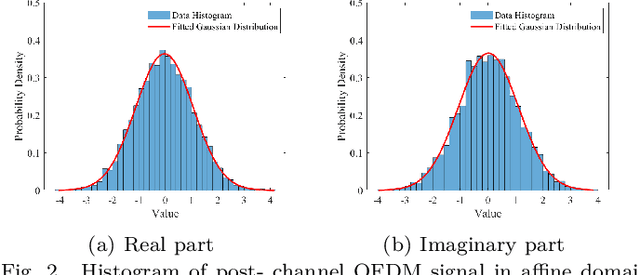
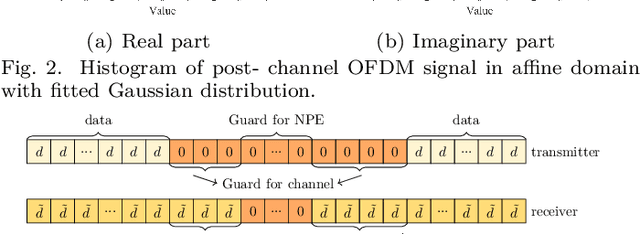
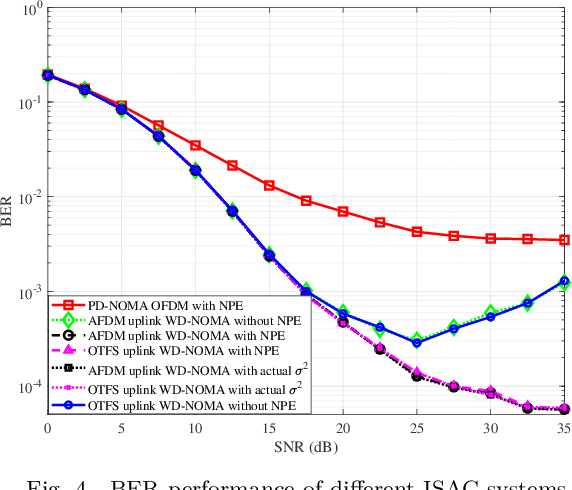
Abstract:According to the recent 3GPP decisions on 6G air interface, orthogonal frequency-division multiplexing (OFDM)-based waveforms are the primary candidates for future integrated sensing and communication (ISAC) systems. In this paper, we consider a monostatic sensing scenario in which OFDM is used for the downlink and its reflected echo signal is used for sensing. OFDM and discrete Fourier transform-spread OFDM (DFT-s-OFDM) are the options for uplink transmission. When OFDM is used in the uplink, the power difference between this signal and the echo signal leads to a power-domain non-orthogonal multiple access (PD-NOMA) scenario. In contrast, adopting DFT-s-OFDM as uplink signal enables a waveform-domain NOMA(WD-NOMA). Affine frequency-division multiplexing (AFDM) and orthogonal time frequency space (OTFS) have been proven to be DFT-s-OFDM based waveforms. This work focuses on such a WD-NOMA system, where AFDM or OTFS is used as uplink waveform and OFDM is employed for downlink transmission and sensing. We show that the OFDM signal exhibits additive white Gaussian noise (AWGN)-like behavior in the affine domain, allowing it to be modeled as white noise in uplink symbol detection. To enable accurate data detection performance, an AFDM frame design and a noise power estimation (NPE) method are developed. Furthermore, a two-dimensional orthogonal matching pursuit (2D-OMP) algorithm is applied for sensing by iteratively identifying delay-Doppler components of each target. Simulation results demonstrate that the WD-NOMA ISAC system, employing either AFDM or OTFS, outperforms the PD-NOMA ISAC system that uses only the OFDM waveform in terms of bit error rate (BER) performance. Furthermore, the proposed NPE method yields additional improvements in BER.
Planning Oriented Integrated Sensing and Communication
Oct 27, 2025Abstract:Integrated sensing and communication (ISAC) enables simultaneous localization, environment perception, and data exchange for connected autonomous vehicles. However, most existing ISAC designs prioritize sensing accuracy and communication throughput, treating all targets uniformly and overlooking the impact of critical obstacles on motion efficiency. To overcome this limitation, we propose a planning-oriented ISAC (PISAC) framework that reduces the sensing uncertainty of planning-bottleneck obstacles and expands the safe navigable path for the ego-vehicle, thereby bridging the gap between physical-layer optimization and motion-level planning. The core of PISAC lies in deriving a closed-form safety bound that explicitly links ISAC transmit power to sensing uncertainty, based on the Cram\'er-Rao Bound and occupancy inflation principles. Using this model, we formulate a bilevel power allocation and motion planning (PAMP) problem, where the inner layer optimizes the ISAC beam power distribution and the outer layer computes a collision-free trajectory under uncertainty-aware safety constraints. Comprehensive simulations in high-fidelity urban driving environments demonstrate that PISAC achieves up to 40% higher success rates and over 5% shorter traversal times than existing ISAC-based and communication-oriented benchmarks, validating its effectiveness in enhancing both safety and efficiency.
A Unified Framework for Adaptive Waveform Processing in Next Generation Wireless Networks
Oct 14, 2025



Abstract:The emergence of alternative multiplexing domains to the time-frequency domains, e.g., the delay-Doppler and chirp domains, offers a promising approach for addressing the challenges posed by complex propagation environments and next-generation applications. Unlike the time and frequency domains, these domains offer unique channel representations which provide additional degrees of freedom (DoF) for modeling, characterizing, and exploiting wireless channel features. This article provides a comprehensive analysis of channel characteristics, including delay, Doppler shifts, and channel coefficients across various domains, with an emphasis on their inter-domain relationships, shared characteristics, and domain-specific distinctions. We further evaluate the comparative advantages of each domain under specific channel conditions. Building on this analysis, we propose a generalized and adaptive transform domain framework that leverages the pre- and post-processing of the discrete Fourier transform (DFT) matrix, to enable dynamic transitions between various domains in response to the channel conditions and system requirements. Finally, several representative use cases are presented to demonstrate the applicability of the proposed cross-domain waveform processing framework in diverse scenarios, along with future directions and challenges.
A Novel Framework for Near-Field Covert Communications with RIS and RSMA
Jul 29, 2025Abstract:This paper explores the near field (NF) covert communication with the aid of rate-splitting multiple access (RSMA) and reconfigurable intelligent surfaces (RIS). In particular, the RIS operates in the NF of both the legitimate user and the passive adversary, enhancing the legitimate users received signal while suppressing the adversarys detection capability. Whereas, the base station (BS) applies RSMA to increase the covert communication rate composed of a private and a shared rate component. To characterize system covertness, we derive closed form expressions for the detection error probability (DEP), outage probability (OP), and optimal detection threshold for the adversary. We formulate a non-convex joint beamforming optimization problem at the BS and RIS under unit-modulus constraints to maximize the covert rate. To tackle this, we propose an alternating optimization (AO) algorithm, where the BS beamformer is designed using a two-stage iterative method based on successive convex approximation (SCA). Additionally, two low-complexity techniques are introduced to further reduce the adversarys received power. Simulation results demonstrate that the proposed algorithm effectively improves the covert communication rate, highlighting the potential of near field RSMA-RIS integration in covert communication.
Waveform Coexistence-Driven RSMA: A Pioneering Strategy for Future 6G Networks
May 24, 2025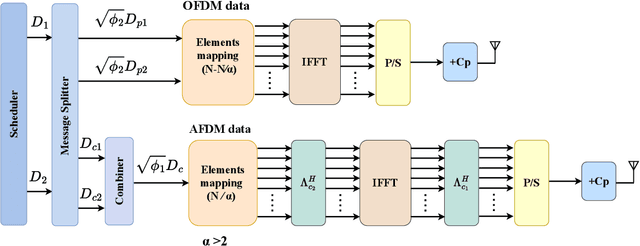



Abstract:Two critical approaches have emerged in the literature for the successful realization of 6G wireless networks: the coexistence of multiple waveforms and the adoption of non-orthogonal multiple access. These strategies hold transformative potential for addressing the limitations of current systems and enabling the robust and scalable design of next-generation wireless networks. This paper presents a novel rate splitting multiple access (RSMA) framework that leverages the coexistence of affine frequency division multiplexing (AFDM) and orthogonal frequency division multiplexing (OFDM). By transmitting common data via AFDM at higher power in the affine domain and private data via OFDM at lower power in the frequency domain, the proposed framework eliminates the reliance on successive interference cancellation (SIC), significantly simplifying receiver design. Furthermore, two data mapping approaches are proposed: a clean pilot method, where pilots are allocated without any data overlapping, ensuring clear separation, and an embedded pilot method, where pilots overlap with data for more efficient resource utilization. Channel estimation is then performed for different channel types. Simulation results demonstrate the robustness and efficiency of the proposed approach, achieving superior performance in efficiency, reliability, and adaptability under diverse channel conditions. This framework transforms non-orthogonal multi-access design, paving the way for scalable and efficient solutions in 6G networks.
AI-Driven Digital Twins: Optimizing 5G/6G Network Slicing with NTNs
May 13, 2025Abstract:Network slicing in 5G/6G Non-Terrestrial Network (NTN) is confronted with mobility and traffic variability. An artificial intelligence (AI)-based digital twin (DT) architecture with deep reinforcement learning (DRL) using Deep deterministic policy gradient (DDPG) is proposed for dynamic optimization of resource allocation. DT virtualizes network states to enable predictive analysis, while DRL changes bandwidth for eMBB slice. Simulations show a 25\% latency reduction compared to static methods, with enhanced resource utilization. This scalable solution supports 5G/6G NTN applications like disaster recovery and urban blockage.
Simultaneous Intrusion Detection and Localization Using ISAC Network
May 12, 2025Abstract:The rapid increase in utilization of smart home technologies has introduced new paradigms to ensure the security and privacy of inhabitants. In this study, we propose a novel approach to detect and localize physical intrusions in indoor environments. The proposed method leverages signals from access points (APs) and an anchor node (AN) to achieve accurate intrusion detection and localization. We evaluate its performance through simulations under different intruder scenarios. The proposed method achieved a high accuracy of 92% for both intrusion detection and localization. Our simulations demonstrated a low false positive rate of less than 5% and a false negative rate of around 3%, highlighting the reliability of our approach in identifying security threats while minimizing unnecessary alerts. This performance underscores the effectiveness of integrating Wi-Fi sensing with advanced signal processing techniques for enhanced smart home security.
Spreading the Wave: Low-Complexity PAPR Reduction for AFDM and OCDM in 6G Networks
May 03, 2025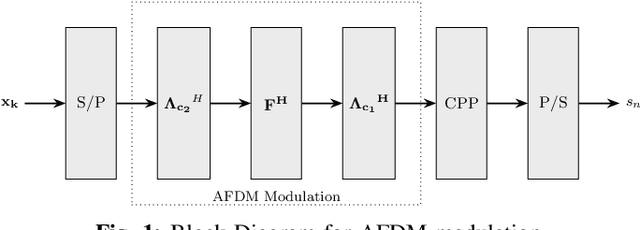
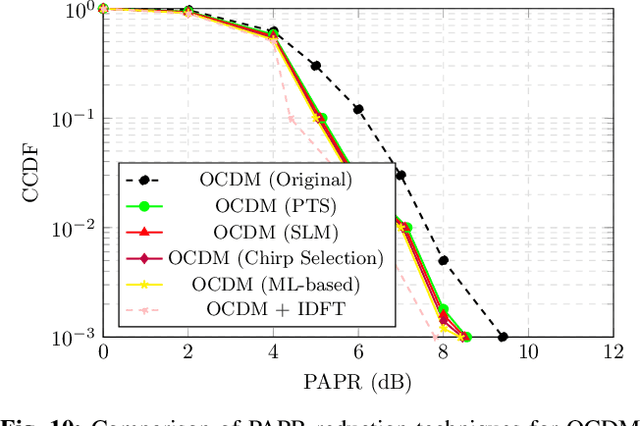
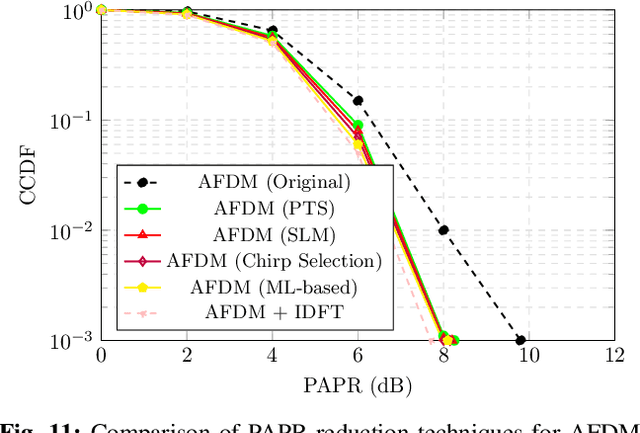
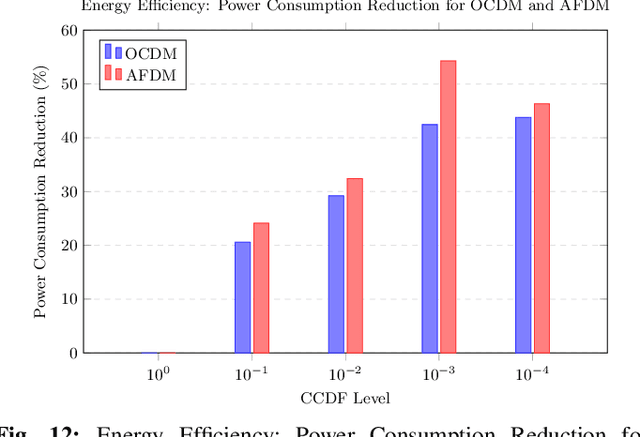
Abstract:High Peak-to-Average Power Ratio (PAPR) is still a common issue in multicarrier signal modulation systems such as Orthogonal Chirp Division Multiplexing (OCDM) and Affine Frequency Division Multiplexing (AFDM), which are envisioned to play a central role in 6G networks. To this end, this paper aims to investigate a novel and low-complexity solution towards minimizing the PAPR with the aid of a unified premodulation data spreading paradigm. It analyze four spreading techniques namely, Walsh-Hadamard transform (WHT), Discrete Cosine transform (DCT), Zadoff-Chu transform (ZC), and Interleaved Discrete Fourier transform (IDFT), which assist in preallocating energy prior to OCDM and AFDM modulation. The proposed method takes advantage of the inherent characteristics of chirp-based modulation to achieve a notable reduction in PAPR at minimal computational load and no side information as compared to past solutions, such as Partial Transmit Sequence (PTS) or Selected Mapping (SLM), which suffers with a high computational complexity. The proposed method has an additional benefit of achieving an improvement in phase selectivity by increasing chirp parameters of AFDM and quadratic phase of OCDM, which amplifies the robustness in doubly dispersive channels. It further reduces interference by smoothing the output spread signal. The analytical and simulation results demonstrate an improvement in the overall energy efficiency and scalability of large ioT sensor networks.
Stealth Signals: Multi-Discriminator GANs for Covert Communications Against Diverse Wardens
May 01, 2025Abstract:Covert wireless communications are critical for concealing the existence of any transmission from adversarial wardens, particularly in complex environments with multiple heterogeneous detectors. This paper proposes a novel adversarial AI framework leveraging a multi-discriminator Generative Adversarial Network (GAN) to design signals that evade detection by diverse wardens, while ensuring reliable decoding by the intended receiver. The transmitter is modeled as a generator that produces noise-like signals, while every warden is modeled as an individual discriminator, suggesting varied channel conditions and detection techniques. Unlike traditional methods like spread spectrum or single-discriminator GANs, our approach addresses multi-warden scenarios with moving receiver and wardens, which enhances robustness in urban surveillance, military operations, and 6G networks. Performance evaluation shows encouraging results with improved detection probabilities and bit error rates (BERs), in up to five warden cases, compared to noise injection and single-discriminator baselines. The scalability and flexibility of the system make it a potential candidate for future wireless secure systems, and potential future directions include real-time optimization and synergy with 6G technologies such as intelligent reflecting surfaces.
 Add to Chrome
Add to Chrome Add to Firefox
Add to Firefox Add to Edge
Add to Edge